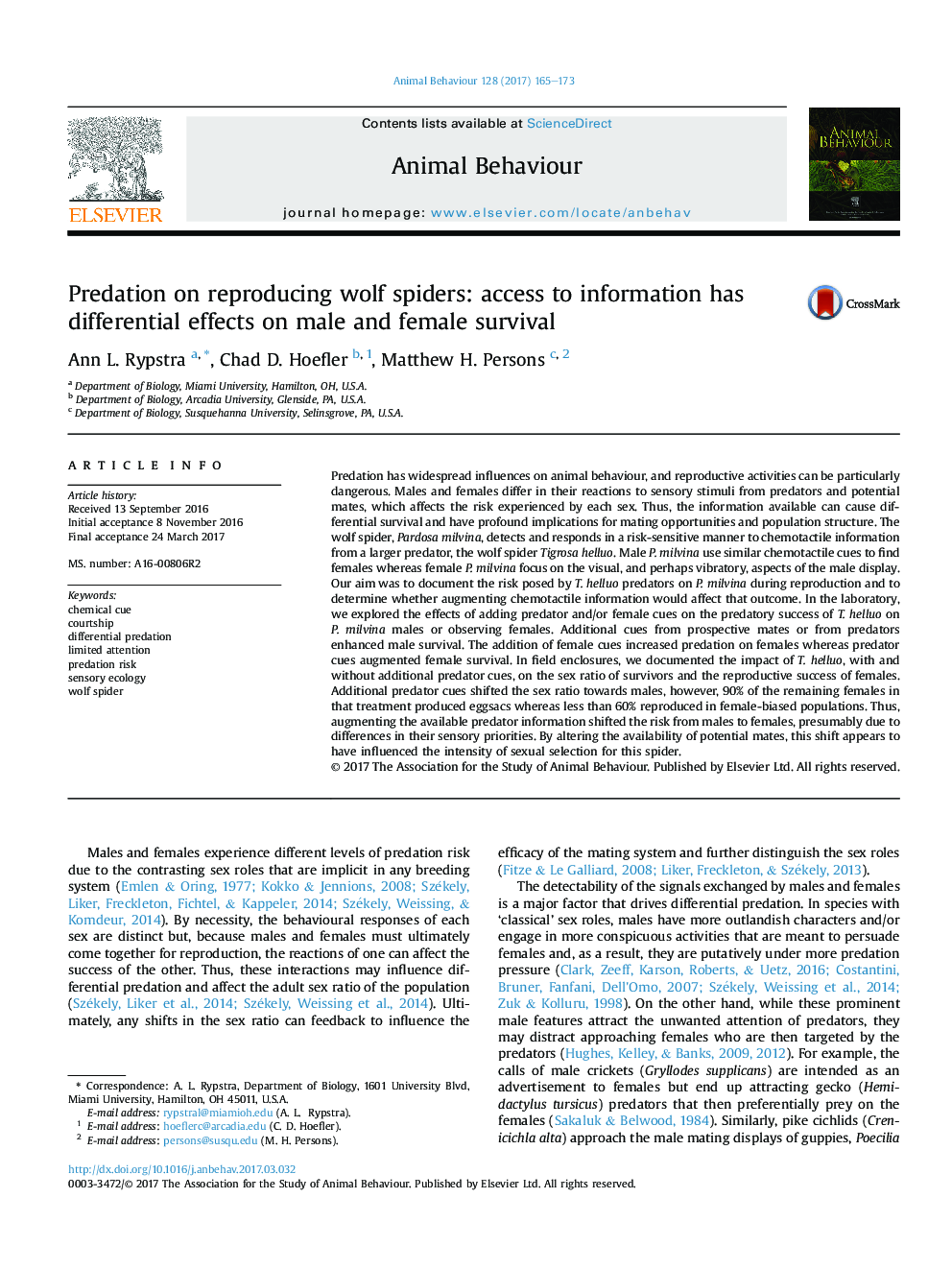| کد مقاله | کد نشریه | سال انتشار | مقاله انگلیسی | نسخه تمام متن |
|---|---|---|---|---|
| 5538468 | 1552200 | 2017 | 9 صفحه PDF | دانلود رایگان |
عنوان انگلیسی مقاله ISI
Predation on reproducing wolf spiders: access to information has differential effects on male and female survival
ترجمه فارسی عنوان
پیشبرد بازسازی عنکبوت گرگ: دسترسی به اطلاعات تأثیرات متفاوتی بر بقای زن و مرد دارد
دانلود مقاله + سفارش ترجمه
دانلود مقاله ISI انگلیسی
رایگان برای ایرانیان
کلمات کلیدی
نشانه شیمیایی، نگاه کردن افسردگی دیفرانسیل، توجه محدود، رشوه دادن اکولوژی حسی، عنکبوت گرگ،
موضوعات مرتبط
علوم زیستی و بیوفناوری
علوم کشاورزی و بیولوژیک
علوم دامی و جانورشناسی
چکیده انگلیسی
Predation has widespread influences on animal behaviour, and reproductive activities can be particularly dangerous. Males and females differ in their reactions to sensory stimuli from predators and potential mates, which affects the risk experienced by each sex. Thus, the information available can cause differential survival and have profound implications for mating opportunities and population structure. The wolf spider, Pardosa milvina, detects and responds in a risk-sensitive manner to chemotactile information from a larger predator, the wolf spider Tigrosa helluo. Male P. milvina use similar chemotactile cues to find females whereas female P. milvina focus on the visual, and perhaps vibratory, aspects of the male display. Our aim was to document the risk posed by T. helluo predators on P. milvina during reproduction and to determine whether augmenting chemotactile information would affect that outcome. In the laboratory, we explored the effects of adding predator and/or female cues on the predatory success of T. helluo on P. milvina males or observing females. Additional cues from prospective mates or from predators enhanced male survival. The addition of female cues increased predation on females whereas predator cues augmented female survival. In field enclosures, we documented the impact of T. helluo, with and without additional predator cues, on the sex ratio of survivors and the reproductive success of females. Additional predator cues shifted the sex ratio towards males, however, 90% of the remaining females in that treatment produced eggsacs whereas less than 60% reproduced in female-biased populations. Thus, augmenting the available predator information shifted the risk from males to females, presumably due to differences in their sensory priorities. By altering the availability of potential mates, this shift appears to have influenced the intensity of sexual selection for this spider.
ناشر
Database: Elsevier - ScienceDirect (ساینس دایرکت)
Journal: Animal Behaviour - Volume 128, June 2017, Pages 165-173
Journal: Animal Behaviour - Volume 128, June 2017, Pages 165-173
نویسندگان
Ann L. Rypstra, Chad D. Hoefler, Matthew H. Persons,
